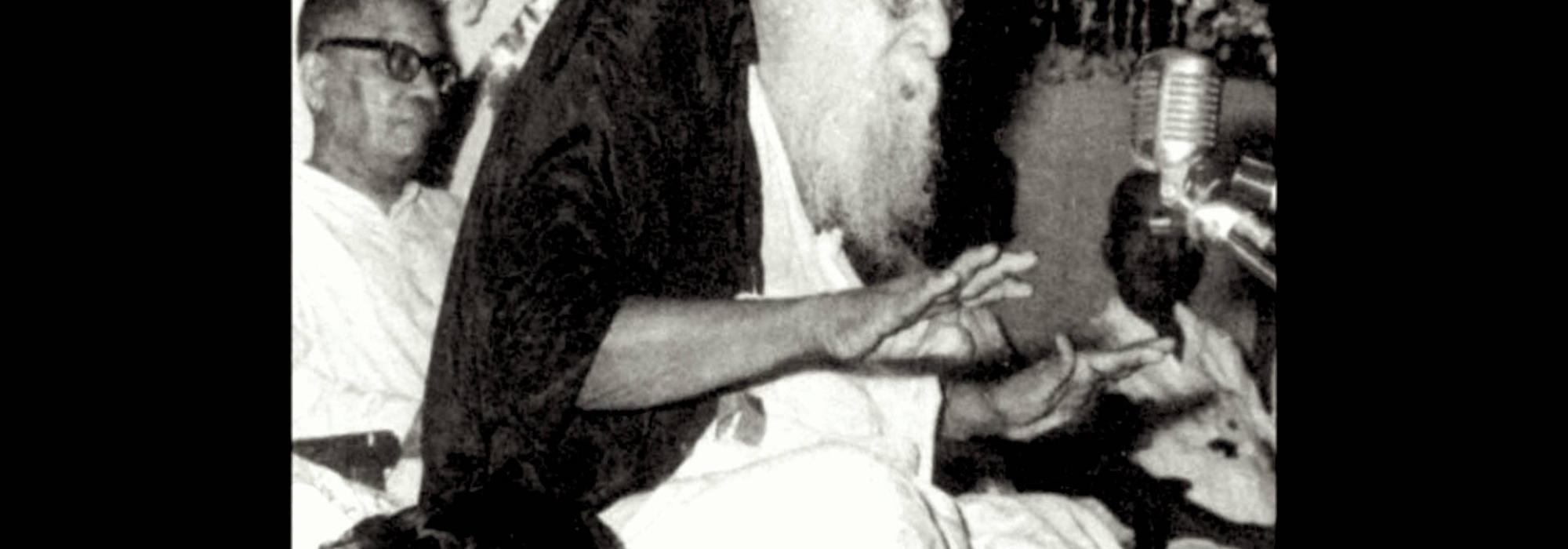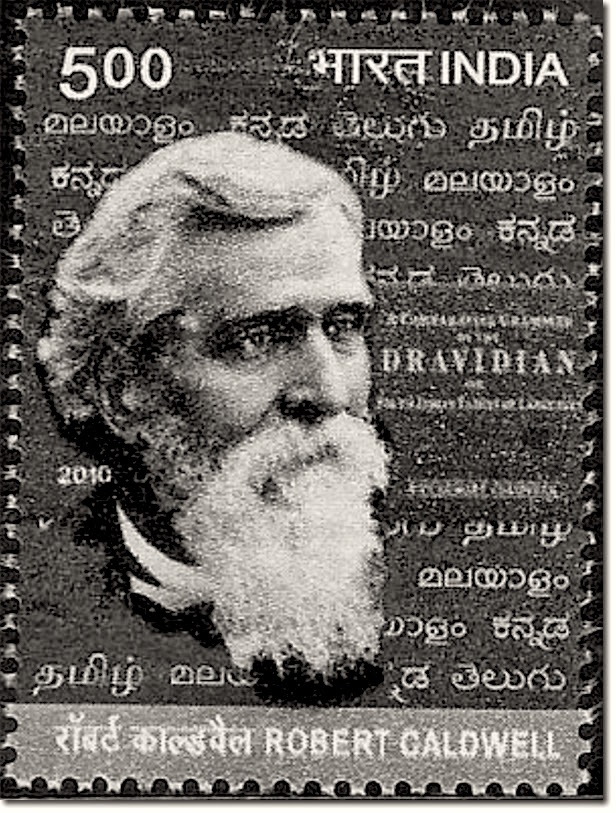Backgrounder
The Tamil country stands tallest among all Indian regions that swallowed the missionary and colonial propaganda of the Aryan Invasion Theory in the closing decades of the 19th Century onwards. More specifically, sections of the Tamil country uncritically swallowed the “Dravidian” propaganda, internalized it, gave it an ideological shape premised basically on the linguistic separateness of Tamil.
This essay marks the beginning of a short series that traces the rise and spread of the Dravidian movement (or Dravidianism) in the state using material primarily from the corpus of (the late) Dr. BGL Swamy’s work. Dr. Swamy was the professor of Botany and later the principal of Presidency College, Madras. He served the institution from 1953-78.
An Eyewitness to the Dravidian Movement
Dr. BGL Swamy was awarded the Sahitya Akademi for his Kannada work on Botany entitled Hasiru Honnu (literally: Green Gold) and was a towering scholar in a variety of fields including Kannada literature, linguistics, classical music, dance, history and culture. He also achieved high distinction in classical and modern Tamil literature, linguistics, history, culture, and published voluminously in several reputed academic journals of his time.
More importantly, he was an eyewitness to and a participant of the various currents of the Dravidian movement that occurred during his time. He routinely engaged with contemporary Dravidian scholars, activists, and ideologues, and has left copious documentation of the same.
Whether one agrees with his observations and conclusions is a separate matter. What is indisputable is the fact his body of work is an important record of a relatively recent past whose story needs to be retold today and for posterity—in a way, to understand the contemporary currents and manifestations that are informed by events and episodes of said vintage.
Church Power in Tamil Nadu Politics
The journey of the Dravidian ideology is a journey of progressive descent as we shall see. In general, what began as linguistic identity-separateness morphed into racial separateness, and eventually, today into Christian religious separateness.
This alarming and pervasive power the Church wields in Tamil Nadu is truly the victory of the missionary Bishop Robert Caldwell.
The Father of Dravidianism
Gloating about his successes in Bengal, Macaulay wrote thus to his father in 1836:
Our English schools are flourishing wonderfully… The effect of this education on the Hindoos is prodigious. No Hindoo, who has received an English education, ever remains sincerely attached to his religion… It is my firm belief that, if our plans of education are followed up, there will not be a single idolater among the respectable classes in Bengal thirty years hence…
Twenty years later, Bishop Robert Caldwell would publish his A Comparative Grammar of Dravidian or South-Indian family of Languages in which he holds that
The [Tamil] language being probably the earliest cultivated on the Dravidian idioms, the most copious and that which contains the largest portion and the richest variety of indubitably ancient forms…
It wouldn’t be an exaggeration to claim that this among other glowing epithets about the language in his book on Tamil Grammar formed the bedrock of Tamil linguistic separatism, and gave the much-needed manure for the racist theories of Dravidian separatism to fully flower and to eventually capture political power.
In the realm of Dravidian ideology, Robert Caldwell is a demigod who has numerous busts and statues dedicated to him across Tamil Nadu. A postage stamp too, was issued in his honour by the Indian Government in 2010. In short, “thou shalt not subject Caldwell to critical scrutiny in Tamil Nadu.”
However, Caldwell’s selfsame book also contained these lines:
We seem to be justified in drawing the conclusion that the Dravidian languages have remained almost unaltered for the last two thousand years, but probably also that the principal dialects that now prevail had a separate existence at the commencement of the Christian era… [Emphasis added]
And he further traces the beginnings of Tamil literature to not earlier than the 10th Century.
Now, this posed an enormous problem for the Dravidian champions back then because among other factors, this ideology chiefly rests on the antiquity of the Tamil language.
For instance, the Dravidian ideological scholar, M.S. Purnalingam Pillai dates the Third Sangam to a period between 1750 BCE and 100 CE while M. Srinivasa Aiyangar places it between 5th Century BCE and 6th Century CE. Still others date it variously from the 2nd Century BCE and the 1st Century CE.
The Art of Making Things Disappear
Dr. BGL Swamy’s Kannada essay, Mangamaaya Kale (The Art of Making Things Disappear) narrates what happened when the latter portion of Caldwell’s “justified conclusion” (mentioned earlier in this essay) was unearthed. The following passage is my translated paraphrase of the original.
Caldwell’s book was first published in 1856. Its second edition saw light in 1857. It contained an elaborate preface (154 pages) in a book totaling 608 pages. In 1936, the Madras University published an abridged version of this book in which the preface was chopped off in several places. The Dravidianists are smart. If someone shows them evidence that goes against their current train of opinion, they ensure that such evidence vanishes completely. They have ensured that the first and second editions of Caldwell’s book have similarly vanished in order to protect the current and future generations of innocent Tamils from being corrupted.
After the abridged editions were published, all copies of Caldwell’s original have disappeared from our libraries. In the rare case that someone actually finds a copy of the original, pages of the (original) preface in that copy have disappeared. In some libraries, the “unnecessary” pages of the said preface have been blackened with ink. I ordered a copy of the microfilm of Caldwell’s [first and second] editions from the British Museum library and showed the relevant portions to some Dravidian scholars. They claimed I had doctored the pages. Neither did I leave it at that. I wrote to the Museum officials and asked them to post the enlarged photos of the relevant pages directly to these scholars. Their response: “You’re very tough! You have managed to fool even the officials of the Museum!”
There’s an even deeper reason why Caldwell’s observations propelled latter-day Dravidian champions into such panic.
- Sundaram Pillai in his 1897 book, The Basic Element in Hindu Civilization claims that from a cultural standpoint, Tamil was “self-born” (sic) and never borrowed from nor was influenced by other cultures and languages. It was most definitely not influenced either by the Sanskrit language or its art or culture. Everything in Tamil Nadu that people today claim as being influenced by Sanskrit is an ignorant claim. Vedanta and Aryan culture are actually of Tamil or Dravidian origin, later appropriated by the Aryans.
- Equally, in 1904, V Kanakasabhai wrote in his The Tamils Eighteen Hundred Years Ago that he had a “revelation” (sic) that the most ancient works in Tamil must have been composed more than 2000 years ago but failed to mention the evidence or the source of his revelation.
The commonality underscoring hosts of such ideologically motivated scholars is the foundation provided by Bishop Robert Caldwell.
Dravidianizing Tamil Nadu’s Flora and Fauna
Indeed, the Justice Party formed in 1917 shrewdly accepted this foundation as gospel truth and built its superstructure upon it. The Dravidian identity, defined as all those people who were non-Brahmins, was another key element that emerged from the said foundation.
Key Dravidian luminaries that propagated hostility against Brahmins included M.S. Purnalingam Pillai, N. Subba Rao, Swami Vedachalam (who later Tamilized his name as Maraimalai Adigal) and others.
As the ideology gained momentum, achieved mass following, and eventually attained political power, almost every aspect of the state was “purified”—that is, Tamilized or Dravidianized if you will.
Here is a small sample of the kind of topics for which PhDs were awarded at the university level:
- Boys in the Sangam Age
- Girls in the Sangam Age
- Children in the Sangam Age
- Infants in the Sangam Age
- If the Tamil language department published a thesis titled, “Tamils in the Sangam Age,” the history department’s counterpart thesis would be titled, “The Sangam Age: Tamils.”
- Twenty-two PhDs were awarded for the same topic, all of them reaching the same conclusion of fixing the date for Silappadikaram at the 2nd Century CE.
Dr. B G L Swamy narrates how a university official once approached him with a request to write an essay on “Tamil” plant life. This was to form part of the government’s ten-volume series depicting the “authentic” account of Tamil history. The first volume published in 1975 is entitled Tamizh Nadu Varalaru.
In response to Swamy’s claim that there’s no such thing as a “Telugu plant life,” “Kannada plant life” and “Tamil plant life,” the official replied, “So you mean to say there’s no unique Tamil plant life like there’s a unique, independent Tamil identity?”
One can find thousands of such real-life instances in Dr. Swamy’s body of work that illustrate the causes and consequences of an identity-centric ideology which captures political power.
Church as the Biggest Beneficiary of Dravidianism
The fact that 80 per cent of Tamil Nadu’s population is under the reservation umbrella is the direct outcome of the Dravidan ideology. This umbrella will only expand as long as this ideology gets an uninterrupted run. Indeed, the greatest beneficiary of the Dravidian discourse has been the Church. Over the years, it has shrewdly used the Aryan versus Dravidian, the Tamil versus non-Tamil, the Brahmin versus the non-Brahmin fault lines to steadily gain converts.
According to the 2011 Census, Christians form 46.85 per cent in Kanyakumari, the highest in the state. Vast tracts of coastal Tamil Nadu are now Christian. Tamil Nadu also receives massive amounts of foreign funding via FCRA for Christian evangelical activity as Prof R. Vaidyanathan shows in a painstaking study.
The Church’s alarming power over Tamil Nadu—and in some cases, national—politics can also be observed in its destructive role in fuelling the Kudankulam protests in early 2012 by using its vast and impenetrable global networks and front-NGOs.
Bishop Robert Caldwell would have been a happy man had he been alive today.
Indeed, the forces that Dravidianism has unleashed over so many decades have inflicted much harm but given so little good in return. Whatever the social or other injustices suffered by sections of the Tamil society in the past, embracing Dravidianism has proven to be like using an axe to get rid of the boil on your palm.
Equally, the quest for an illusory “pure” Dravidian or whatever other identity is akin to peeling layer after layer of an onion. At the end, one is left with nothing but tears.
To be continued















































Comments